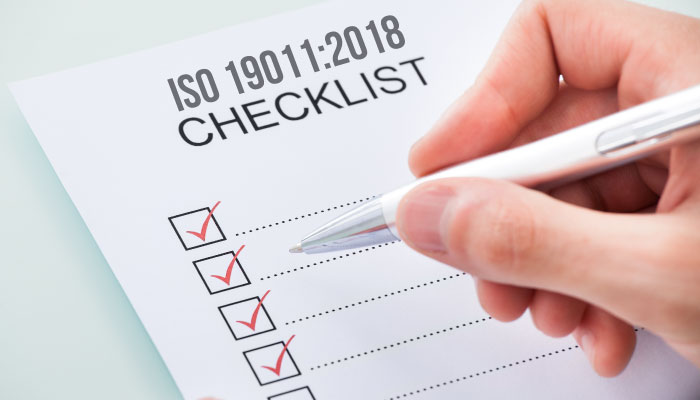ISO 19011 has been revised and released as a 2018 Guideline for Auditing Management Systems, and, while its use it not mandatory, your manufacturing firm could reap important benefits from this auditing tool.
Management system standards—such as ISO 0991, ISO 14001, and ISO 27001—list ISO 19011 as part of the internal audit clause, and the tool can provide critical help for reaching organization’s objectives, says industry expert Duke Okes. The 2018 edition, in particular, includes additions that you can use to create virtual, remote, and e-audits—and Okes shows you how in his AudioSolutionz webinar, “Why Management System Audit Programs Should Utilize ISO 19011: 2018.”
Use ISO 19011 to Manage Your Audits
ISO 19011 is an internal standard that sets forth guidelines for management system audits. Developed by the International Organization for Standardization, its aim is to save time, effort, and money by providing:
- A clear explanation of management systems auditing
- Guidance for the management of audit programs
- Guidance for conducting internal and external audits
- Advice on evaluating the competence of evaluators
The standards, explains ASQ, can be used by a long list of organizations and individuals.
“Anyone involved in audits or audit programs can use ISO 19011,” ASQ notes. “More specifically, ISO 19011 is for people in charge of managing an audit program and evaluating individuals involved in the audit programs and audits. Anyone who has been tasked with improving an audit program will find ISO 19011:2011 of value.”
Key: When you are talking quality, manufacturing audits can play a huge role in outcomes, notes Wayne Chaneski, executive director at the Center for Manufacturing Systems at the New Jersey Institute of Technology.
“A manufacturing audit is a comprehensive inspection of a process to determine whether it is performing satisfactorily,” he wrote for Modern Machine Shop Online. “A manufacturing audit is usually limited to a small portion of units produced, but the manufacturing processes involved are reviewed thoroughly. An audit does not replace normal quality control efforts, but supplements them.”
What’s New for 2018
An updated ISO 19011 was published in April and was based on ISO Project Committee determinations from the organization’s 2017 conference in Mexico. Key outcomes from the conference, notes Quality.org, are:
- A new risk-based approach to planning, conducting, and auditing reports;
- “Audit evidence” is now “objective evidence”—information subject to some degree of verifications; and
- Annex A is expanded to include: information verification, the use of professional judgement, a focus on performance outcomes, supply-chain auditing, and more.
The American National Standards Institute notes that, with the 2018 update, an audit can be conducted against guidelines defined in management systems standards as well as the needs of interested parties, statutory and regulatory requirements, and quality plans.
Audits must be carefully planned and orchestrated if you want to capture their maximum benefits, adds Chaneski; a good start is to select the process to audit and then decide who will do the work and how often.
ISO 19011:2018 has loads of useful features and guidelines, explains Okes. Learning how to use the protocol can illuminate how your current audit programs are performing.



